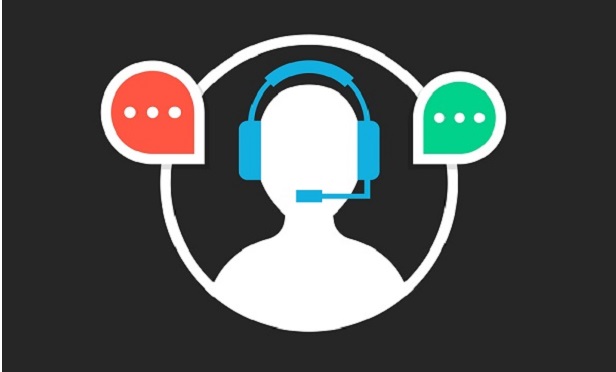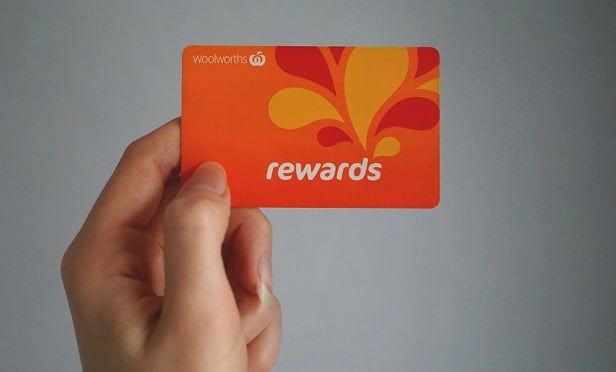Counting sleep: New benefit encourages employees to track their shut-eye
Are your employees getting enough sleep? According to the CDC, about one-third of U.S. adults reported getting less than the recommended amount of rest. Read this blog post to learn more.
It’s one of employers’ recurring nightmares: Employees aren’t getting enough sleep — and it’s having a big impact on business.
Roughly one-third of U.S. adults report that they get less than the recommended amount of rest, which is tied to chronic health issues including Type 2 diabetes, heart disease, obesity and depression, the Centers for Disease Control reports.
That lack of sleep is also costing businesses approximately $411 billion a year in lost productivity, according to figures from global policy think tank RAND Corporation.
But one company thinks it has a solution to the problem: A new employee benefit that helps workers track, monitor and improve sleep.
Welltrinsic Sleep Network, a subsidiary of the American Academy of Sleep Medicine, this month launched an online sleep wellness program to help workers get more out of their eight hours of shuteye. Employees use the online tool to create a sleep diary, which tracks the quantity and quality of rest, says Dr. Lawrence Epstein, president and CEO of Welltrinsic. Employees manually log their time or upload data from a fitness tracker, like a Fitbit, to the platform.

Employers can offer the program as a benefit to complement broader wellness initiatives. The program allows companies to track how often an employee uses the platform and offer incentives like days off or reduced health insurance premiums if they are consistent, Epstein says. Welltrinsic charges an implementation fee to set up a company’s account, plus a per-user fee determined by the number of participants.
“Sleep affects a lot of aspects of how people feel about their work and their productivity,” Epstein says. “If you can help improve their health and morale, it will help with retaining staff.”
Epstein says lethargic workers are more likely to miss work or not be productive when they are in the office. But there are actionable ways employees can improve the quality of their rest, he adds.
Welltrinsic’s program gives employees a comprehensive review of their sleep. Then employees set a sleep goal — the goal can be as simple as getting to bed at a particular time or improving sleep quality. After employees have logged their data, Welltrinsic provides them with custom tips for improving sleep, which may include reducing light exposure or increasing mindfulness and relaxation.
Still, sometimes an employee may have a more serious issue, Epstein says. If numerous efforts to improve a nighttime ritual have fallen short, an employee may need to be examined for a sleep disorder, he explains. To that end, the program also offers sleep disorder screening tools. If it appears an individual is at risk for a disorder, Welltrinsic provides workers with a list of specialists who can help.
“If we feel they are at risk for a sleep disorder, we can direct them to somebody close to them who will be able to address their problem,” Epstein adds.
The American Academy of Sleep Medicine is providing Welltrinsic’s sleep program as a benefit to its own roughly 60 workers. Meanwhile, Epstein says Welltrinsic recently engaged in a beta test of the program with multiple employers but did provide additional names.
“It’s a way that they can help motivate their employees to improve their own health,” he says.
Epstein doesn’t think that employees are aware that they aren’t getting enough sleep — and demanding work schedules aren’t helping. He’s hoping the program will help people realize that sometimes they need to turn off their email and take a rest.
“We are built to spend about a third of our lives sleeping, and there are consequences for not doing that,” he says. “Hopefully this helps get that message and information out to people.”
This article originally appeared in Employee Benefit News.
SOURCE: Hroncich, C. (20 November 2018) "Counting sleep: New benefit encourages employees to track their shut-eye" (Web Blog Post). Retrieved from https://www.employeebenefitadviser.com/news/counting-sleep-new-benefit-encourages-employees-to-track-their-shut-eye?brief=00000152-1443-d1cc-a5fa-7cfba3c60000
Poor employee health costs employers half trillion dollars a year
According to a recent report from the Integrated Benefits Institute, poor employee health costs employers half a trillion dollars each year and almost 1.4 billion in missed work days. Read on to learn more.
Poor employee health is costing employers in a big way — to the tune of half a trillion dollars and nearly 1.4 billion days of missed work each year.
That’s according to a new report from the Integrated Benefits Institute, which finds that employees miss around 893 million days a year from illness and chronic conditions, and another 527 million days because of impaired performance due to those illnesses. Those days add up to $530 billion in lost productivity.
“To put this in further context, the cost of poor health to employers is greater than the combined revenues of Apple, Amazon, Microsoft, Netflix, eBay and Adobe,” says Thomas Parry, president of Integrated Benefits Institute, an independent nonprofit that serves more than 1,250 employers including Amazon, Kroger, McDonald’s and Walmart.

The $530 billion price tag is on top of what employers already spend on healthcare benefits. Employers pay $880 billion in healthcare benefits for their employees and dependents, which means that poor health costs amount to “60 cents for every dollar employers spend on healthcare benefits,” according to the study.
“There’s not a CEO or CFO that can placidly accept their business expending the equivalent of almost two-thirds of their healthcare dollars on lost productivity,” Perry says. “Illness costs this country hundreds of billions of dollars, and we can no longer afford to ignore the health of our workforce.”
Employers invest in healthcare benefits to maintain a productive workforce. But this new study suggests that more needs to be done to keep employees healthy, or strategies need to be put in place to lower spending. Or both.
“It’s critical that employers understand how strategies for managing healthcare spend — such as cost- shifting to employees or ensuring better access and more cost-effective care — can impact the kinds of conditions that drive illness-related lost productivity,” says Brian Gifford, director of research and analytics at IBI.
The study broke down the estimated costs of poor health into several categories:
Wage and benefits (incidental absence due to illness, workers’ compensation and federal family and medical leave): $178 billion.
Impaired performance (attributed to chronic health conditions): $198 billion.
Medical and pharmacy (workers’ compensation, employee group health medical treatments, employee group health pharmacy treatments): $48 billion.
Workers’ compensation other costs (absence due to illness, reduced performance): $25 billion.
Opportunity costs of absence (missed revenues, costs of hiring substitutes, overtime): $82 billion.
For its study, IBI used 2017 data from the U.S. Bureau of Labor Statistics as well as its own benchmarking data from 66,000 U.S. employers.
SOURCE: Paget, S. (20 November 2018) "Poor employee health costs employers half trillion dollars a year" (Web Blog Post). Retrieved from https://www.benefitnews.com/news/poor-employee-health-costs-employers-half-trillion-dollars-a-year?brief=00000152-14a7-d1cc-a5fa-7cffccf00000
7 wellness program ideas you may want to steal
Need more energy and excitement in your office? Keep your employees healthy and motivated with these fun wellness program ideas.
Building your own workplace wellness program takes work–and time–but it’s worth it.
“It’s an investment we need to make,” Jennifer Bartlett, HR director at Griffin Communication, told a group of benefits managers during a session at the Human Resource Executive Health and Benefits Leadership Conference. “We want [employees] to be healthy and happy, and if they’re healthy and happy they’ll be more productive.”
Bartlett shared her experiences building, and (continually) tweaking, a wellness program at her company–a multimedia company running TV outlets across Oklahoma –over the last seven years. “If there was a contest or challenge we’ve done it,” she said, noting there have been some failed ventures.
“We got into wellness because we wanted to reduce health costs, but that’s not why we do it today,” she said. “We do it today because employees like it and it increases morale and engagement.”
Though Griffin Communication's wellness program is extensive and covers more than this list, here are some components of it that's working out well that your company might want to steal:
- Fitbit challenge.Yes, fit bits can make a difference, Bartlett said. The way she implemented a program was to have a handful of goals and different levels as not everyone is at the same pace-some might walk 20,000 steps in a day, while someone else might strive for 5,000. There are also competition and rewards attached. At Griffin Communications, the company purchased a number of Fitbits, then sold them to its employees for half the cost.
- Race entry.Griffin tries to get its employees moving by being supportive of their fitness goals. If an employee wants to participate in a race-whether walking or running a 5k or even a marathon, it will reimburse them up to $50 one time.
- Wellness pantry.This idea, Bartlett said, was "more popular than I ever could have imagined." Bartlett stocks up the fridge and pantry in the company's kitchen with healthy food options. Employees then pay whole sale the price of the food, so it's a cheap option for them to instead of hitting the vending machine. "Employees can pay 25 cents for a bottled water or $1.50 for a soda from the machine."
- Gym membership."We don't have an onsite workout facility, but we offer 50 percent reimbursement of (employees') gym membership cost up to a max of 200 per year," she said. The company also reimburses employees for fitness classes, such as yoga.
- Biggest Loser contest.Though this contest isn't always popular among companies, a Biggest Loser-type competition- in which employees compete to lose the most weight-worked out well at Griffin. Plus, Bartlett said, "this doesn't cost us anything because the employee buys in $10 to do it." She also insisted the company is sensitive to employees. For example, they only share percentages of weight loss instead of sharing how much each worker weights.
- "Project Zero" contest.This is a program pretty much everyone can use: Its aim is to avoid gaining the dreaded holiday wights. The contest runs from early to mid- November through the first of the year. "Participants will weigh in the first and last day of the contest," Bartlett said. "The goal is to not gain weight during the holidays-we're not trying to get people to lose weight but we're just to not get them to not eat that third piece of pie."
- Corporate challenges.Nothing both builds camaraderie and encourages fitness like a team sports or company field day. Bartlett said that employees have basically taken this idea and run with it themselves- coming up with fun ideas throughout the year.
SOURCE:
Mayer K (14 June 2018) "7 wellness program ideas you may want to steal" [Web Blog Post]. Retrieved from https://www.benefitspro.com/2015/10/10/7-wellness-program-ideas-you-may-want-to-steal/
Viewpoint: Coaching Your Employees to Finish Strong as They Near Retirement
10,000 people a day are retiring. Help your employees transition into retirement with these important strategies.
Baby Boomers are beginning to retire in large numbers. AARP says 10,000 people a day are retiring from work. Most companies have no formal program to aid these employees in this transition. Although we often have extensive onboarding programs, little to nothing is done when an employee is ending his or her career, except a goodbye party.
For many people, upcoming retirement means coasting until the day they are done. Dave was a senior-level manager who announced his retirement one year in advance. The problem was that Dave then became "retired on the job." He stopped innovating. He stopped moving new ideas forward. He avoided conflict by ignoring problems. He no longer aggressively led his team.
Dave had been very successful in his career but he ended poorly, so that was how everyone remembered him. His team suffered poor morale because its members felt they were stuck until Dave left his position. That is a problem for the whole company.
Help retiring employees to end strong at your company. Instead of letting employees coast and drain the company coffers, HR can support retiring workers as they end their careers in the best way possible, fully contributing up until the last day.
Some key strategies include:
- Creating a planning-to-retire educational program.HR should develop a workshop to show employees how to plan out their future, paying special consideration to how they will handle all the free time they will have once they leave the company. The course can cover financial planning, too. The employee will be grateful for this assistance.
- Coaching the employee's manager.Managers of departing employees need instruction on how to support someone leaving the group. The formal coaching should offer proven strategies to keep the employee engaged until his or her last day. The supervisor should encourage the employee to complete as many key projects as possible and accept the responsibility to not let the employee become retired on the job.
- Documenting their knowledge.As many Baby Boomers walk out the door, their depth of experience and insight depart with them. Companies should have these employees document their knowledge by creating a training manual or by adding pages to the organization's intranet so other employees can learn from these folks.
- Training a new employee.Ideally, the organization should promote or hire a replacement and have the departing employee train the new person. Having a two- to three-week training period helps the new employee get up to speed and be more productive, more quickly.
- Offering a "bridge job."Finding talented workers to replace departing Baby Boomers will become harder to do in our tight labor market. Developing a transitional or bridge job where the employee remains at work on a part-time basis may allow the company to avoid the quest for talent that is often not available. Baby Boomers want more flexibility and fewer work hours at the end of their career. In fact, 72 percent say they plan to work in their retirement. Annette was an IT specialist who wanted to leave the energy utility she worked for. The HR department was under the gun to deliver a new human resource information system and asked her to continue working three days a week with the ability to take more unpaid vacations. This new bridge job kept her in her role for 18 months until the big project was completed.
Final days may be a bittersweet time for employees to say goodbye to their co-workers, friends and the company itself. Having a supportive send-off is a great policy to ensure that everyone leaves on a positive note and will speak highly of your organization after the departure.
SOURCE:
Ryan R (4 June 2018) "Viewpoint: Coaching Your Employees to Finish Strong as They Near Retirement" [Web Blog Post]. Retrieved from https://www.shrm.org/ResourcesAndTools/hr-topics/benefits/Pages/Viewpoint-Coaching-Your-Employees-on-Finishing-Strong-As-They-Retire-.aspx?_ga=2.37756515.1310386699.1527610160-238825258.1527610159
4 perks to make your employees' lives easier and less stressful
Recruit top talent with ease and confidence when considering these tips on attractive, creative and innovative employment perks.
A 2016 survey from Glassdoor found that 57 percent of people looking for jobs said benefits and perks are among their top considerations when weighing offers. So how can a company stack the deck in its favor when recruiting top talent? Although some companies limit their benefits packages to traditional offerings such as health insurance, 401Ks and paid time off, a today’s forward-thinking employers know they need to find more creative ways to offer benefits that make a genuine difference in employees’ day-to-day work and personal lives.
As competition for employees intensifies, the race to improve employer-based services is likely to result in better options for employees. Unconventional benefits options come in many shapes and forms, but they share one thing in common: the goal of saving time for employees, reducing their stress, and ultimately improving their health and satisfaction at work.
All other things being equal, companies that offer innovative perks that speak to the well-being of their employees are more likely to attract and retain the top talent in their field. Here are a few such perks to consider.
Expectant-parent counseling
You’ve thrown the baby shower, cut the cake, helped carry staff gifts to the car—and you’ve explained the company’s parental leave policy in detail. As you wave Julie from accounting off with best wishes, you’re confident she’ll come back to her desk in a few months’ time.
But the truth is that 43 percent of women who have babies leave the workforce permanently within a matter of months. Many say it’s because they don’t have adequate support at home to enable them to resume their careers. That is why companies like Reddit and Slack use a service called Lucy that provides expectant employees help before, during, and after parental leave, including 24/7 messaging and one-on-one sessions that can be done in the home or online.
As Reddit VP of People Katelin Holloway put it, “It’s not enough to simply offer parental leave; every child and family is different and has independent needs.” By helping expectant parents find resources that meet their specific needs, you’re making an investment in your workforce that pays enormous dividends in retention, productivity, and morale.
Caregiving support
A Gallup survey revealed more than 1 in 6 full-time or part-time American workers has difficulty balancing caring for elderly parents with their work commitments. This results in decreased productivity and frequent leaves of absence. Companies can help their employees cope and stay engaged with their work by providing concierge services that offer amenities such as taking elderly parents to doctor’s appointments and eldercare coaching when choosing between assisted living options.
To help reduce stress (and retain highly specialized employees), take a cue from companies like Microsoft and Facebook, which provide caregiver paid-leave programs to help employees care for ailing family members or sick relatives.
Dry cleaning at work
Sometimes it’s the little things that save time during the workday that can push the needle in your favor as a potential employer. It may sound trivial, but company-provided dry cleaning is a perk that’s proving to be a big draw in workplaces from Wall Street to Silicon Valley. Service providers pick up employees’ laundry or dry cleaning items from work and return them to a designated employer closet in their office building—one less errand, and no more lost tickets. “People have lives to live, so I try to make it easy for them to deal with any of those personal errands that could take up time for them,” said Experian CEO Craig Boundy, speaking about his company’s employee benefits programs in an interview with the The Orange County Register.
Car maintenance and service
According to the U.S. Bureau of Labor Statistics, the average American household owns 1.9 vehicles and spends around 1.5 percent of its annual income on auto maintenance and repairs. Cars are a significant investment for most of us, so the more you can help potential employees save time and money on maintaining their vehicles, the more tempting you’ll become as an employer. Growing numbers of innovative companies provide car repair services to help employees save money, find the best quality mechanics, and reduce stress associated with the entire process.
Some firms also offer on-site car wash services, giving employees peace of mind and a positive outlook as they drive home after work. Several big Silicon Valley corporations —including eBay, SanDisk, Cisco, and Oracle—use BoosterFuels to fill employees’ gas tanks while they’re at work. It saves employees time and protects them from potential accidents or robberies at gas stations.
SOURCE:
Weiss Y (31 May 2018) "4 perks to make your employees' lives easier and less stressful" Web Blog Post]. Retrieved from https://www.benefitspro.com/2018/05/11/4-perks-to-make-your-employees-lives-easier-and-le/
How to get the most out of a day off
Time off is necessary but planning an extended vacation may be stressful. These pointers will help show you how micro-vacations can positively benefit your lifestyle.
The idea of “vacation” often conjures up thoughts of trips to faraway lands. While it’s true that big trips can be fun and even refreshing, they can also take a lot of time, energy, and money. A lot of people feel exhausted just thinking about planning a vacation—not just navigating personal commitments and school breaks, but deciding how to delegate major projects or put work on hold, just so they can have a stress-free holiday. Because of this, some might put off their time away, figuring they’ll get to it when their schedule isn’t so demanding, only to discover at the end of the year that they haven’t used up their paid time off.
In my experience as a time management coach and as a business owner, I’ve found that vacations don’t have to be big to be significant to your health and happiness. In fact, I’ve been experimenting with the idea of taking “micro-vacations” on a frequent basis, usually every other week. These small bits of time off can increase my sense of happiness and the feeling of having “room to breathe.”
From my point of view, micro-vacations are times off that require you to use a day or less of vacation time. Because of their shorter duration, they typically require less effort to plan. And micro-vacations usually don’t require you to coordinate others taking care of your work while you’re gone. Because of these benefits, micro-vacations can happen more frequently throughout the year, which allows you to recharge before you’re feeling burnt out.
If you’re feeling like you need a break from the day-to-day but can’t find the time for an extended vacation, here are four ways to add micro-vacations to your life.
Weekend trips.Instead of limiting vacations to week-long adventures, consider a two- to three-day trip to someplace local. I’m blessed to live in Michigan, and one of my favorite weekend trips is to drive to Lake Michigan for some time in a little rented cottage on the shore or to drive up north to a state park. Especially if you live in an urban area, traveling even a few hours can make you feel like you’re in a different world.
To make the trip as refreshing as possible, consider taking time off on Friday so you can wrap up packing, get to your destination, and do a few things before calling it a night. That still leaves you with two days to explore the area. If you get home by dinnertime on Sunday, you can unpack and get the house in order before your workweek starts again.
There may be a few more e-mails than normal to process on Monday, but other than that, your micro-vacation shouldn’t create any big work pileups.
Margin for personal to-do items.Sometimes getting the smallest things done can make you feel fantastic. Consider taking an afternoon—or even a full day—to take an unrushed approach to all of the nonwork tasks that you really want to do but struggle to find time to do. For example, think of those appointments like getting your hair cut, nails done, oil changed, or doctor visits. You know that you should get these taken care of but finding the time is difficult with your normal schedule.
Or perhaps you want to take the time to do items that you never seem to get to, like picking out patio furniture, unpacking the remaining boxes in the guest room, or setting up your retirement account. You technically could get these kinds of items done on a weeknight or over the weekend. But if you’re consistently finding that you’re not and you have the vacation time, use it to lift some of the weight from the nagging undone items list.
Shorter days for socialization.As individuals get older and particularly after they get married, there tends to be a reduction in how much time they spend with friends. One way to find time for friends without feeling like you’re sacrificing your family time is to take an hour or two off in a day to meet a friend for lunch or to get together with friends before heading home. If you’re allowed to split up your vacation time in these small increments, a single vacation day could easily give you four opportunities to connect with friends who you otherwise might not see at all.
If you struggle to have an uninterrupted conversation with your spouse because your kids are always around, a similar strategy can be helpful. Find days when one or both of you can take a little time off to be together. An extra hour or two will barely make a difference at work but could make a massive impact on the quality of your relationship.
Remote days for decompression. Many offices offer remote working options for some or all of the week. If that’s offered and working remotely is conducive to your work style and your tasks, take advantage of that option.
Working remotely is not technically a micro-vacation, but it can often feel like one. (Please still do your work—I don’t want to get in trouble here!) If you have a commute of an hour or more each way, not having to commute can add back in two or more hours to your life that can be used for those personal tasks or social times mentioned above.
Also, for individuals who work in offices that are loud, lack windows, or where drive-by meetings are common, working remotely can feel like a welcome respite. Plus, you’re likely to get more done. A picturesque location can also give you a new sense of calm as you approach stressful projects. I find that if I’m working in a beautiful setting, like by a lake, it almost feels as good as a vacation. My surroundings have a massive impact on how I feel.
Instead of seeing “vacation” as a large event once or twice a year, consider integrating in micro-vacations into your life on a regular basis. By giving yourself permission to take time for yourself, you can increase your sense of ease with your time.
SOURCE:
Saunders E (28 May 2018). [Web Blog Post]. Retrieved from address https://hbr.org/2018/05/how-to-get-the-most-out-of-a-day-off
Are your employees scared to take time off?
Your employees might be feeling pressured and overworked. Avoid low productivity in your workplace with these tips on vacation impact.
They might be getting paid time off, but close to half of American workers aren’t taking it—or aren’t taking as much of it as they’re entitled to. And that’s making for a workforce that’s not only overworked and under stress, but actually being pressured to forego time that they’re entitled to.
So says “The PTO Pressure Report” from Kimble Applications, which finds that not only have 47 percent of employees not taken as much PTO as they’re entitled to, 21 percent admit to having left more than five vacation days unused. According to survey respondents, workload-related stress is the top reason so many are failing to use all the PTO they’re entitled to: 27 percent say they just have too many projects or deadlines to take time off, and 13 percent dread the heaps they’ll find on their desks when they get back.
Their bosses aren’t helping, either, with 19 percent of respondents saying that they’ve felt pressured by employers or managers to abstain from vacation. Not only that, more than a quarter are actually nervous or even anxious at the thought of submitting a time-off request; 19 percent worry about being away from work, while 7 percent fear that their requests will be denied.
But businesses could actually be shooting themselves in the foot by keeping such a tight rein on employees. Says the report, “These managers likely don’t realize that this is having a direct, negative impact on the business, as past research indicates that employees who take most or all of their vacation time each year perform better and are more productive than those who do not.”
Even if they get to go on vacation, it’s not doing a lot of them much good. They’re too wired into the job, with 48 percent saying they proactively check in on vacation. A surprising 19 percent do so every day, with another 29 percent doing so periodically. And the boss isn’t making it easy to be on vacation once they get to go; 29 percent of workers say they’re expected to be available for emergencies, and another nine percent say they’re expected to check in frequently. Can’t exactly unwind too well with that hanging over their heads, which means they get back to work stressed out from making sure they satisfy vacation’s employment obligations.
They think they’ll get ahead that way, though—at least 14 percent believe that if they leave that vacation time on the table, they’re more likely to succeed and move up in the ranks. And 19 percent say that’s more important to them than the vacation time they’re abandoning—they’d give up their vacation time for a whole year if it meant they’d nail a promotion.
Younger employees are more willing to work instead of take time off than their elders ; 25 percent of those aged 25–34 feel this way compared to only 17 percent of those aged 55–64.
What businesses may not realize is how important PTO is for the company’s bottom line. Mark Robinson, co-founder of Kimble Applications disagrees. “I am an advocate of giving people a reasonable vacation entitlement and then encouraging them to take it,” he says in the report. ”My experience is that businesses work best if there is clarity about this and people feel confident about planning their vacation well in advance. That is better for the individuals and it allows the business to forecast and budget better too.”
Robinson adds, “American businesses sometimes offer unlimited time off—but they know that in most cases that ends up with people taking less time off. Also, in businesses where people don’t feel confident enough about taking vacations to plan them well in advance, there can be an issue at the end of the year when they suddenly all disappear at once. Successful, sustainable organizations learn to plan their business around PTO time.”
SOURCE:
Satter M. (22 May 2018). “Are your employees scared to take time off?” [Web Blog Post]. Retrieved from address https://www.benefitspro.com/2018/05/22/are-your-employees-scared-to-take-time-off/
10 perks that help attract and retain workers
Job seekers and employees today have more control over their careers than ever before. Leaving current positions for better opportunities, and being more selective when applying for a new job, are now commonplace.
With the war for talent in full effect, companies of all sizes have had to take a close look at their compensation and employee benefits to ensure that they meet, or preferably exceed, expectations.
While keeping up with the latest employee benefits trends is one great way to maximize benefit plans, employers should also explore additional employee and workplace perks to help with recruiting, retention and engagement.
1. Free snacks and coffee
 (Photos: Shutterstock)
(Photos: Shutterstock)
An often-overlooked way to enhance the workplace is to provide employees with complimentary snacks and coffee. Not only does this help employees save a few dollars each day, but office snacks have shown to increase workplace production. And offering employees healthy alternatives can get people more energized and involved with a company’s overall wellness program.
2. Flexible work schedules
 One of the biggest trends in the business world has been a shift away from the traditional 9 to 5 work day. While some positions require such a schedule, more and more companies are enabling employees to have more flexibility with their working hours. As a matter of fact, many businesses are including flexible working schedules in their job descriptions and on career sites to help attract younger job seekers. As work-life balance continues to become more important to employees, flexible working schedules can be valuable perk for employers to offer.
One of the biggest trends in the business world has been a shift away from the traditional 9 to 5 work day. While some positions require such a schedule, more and more companies are enabling employees to have more flexibility with their working hours. As a matter of fact, many businesses are including flexible working schedules in their job descriptions and on career sites to help attract younger job seekers. As work-life balance continues to become more important to employees, flexible working schedules can be valuable perk for employers to offer.
3. Working from home
 While telecommuting is becoming more common, not all employees can exclusively work-from-home. However, enabling employees to work at home on occasion can be a great perk for keeping employees happy and engaged. Providing employees with the tools and resources necessary to work from home when needed can greatly assist with lowering turnover, and can also help reduce stress and improve the employee experience.
While telecommuting is becoming more common, not all employees can exclusively work-from-home. However, enabling employees to work at home on occasion can be a great perk for keeping employees happy and engaged. Providing employees with the tools and resources necessary to work from home when needed can greatly assist with lowering turnover, and can also help reduce stress and improve the employee experience.
4. Employee assistance programs
 A greater focus on employee wellness – both physical AND mental – is occurring in companies big and small. One way to help with this initiative is to have an employee assistance program (EAP). These programs provide counseling to employees for both professional and personal issues, and can include consultations with licensed clinicians for financial and legal services, grief counseling, and day-to-day support for full-time employees and anyone in their household.
A greater focus on employee wellness – both physical AND mental – is occurring in companies big and small. One way to help with this initiative is to have an employee assistance program (EAP). These programs provide counseling to employees for both professional and personal issues, and can include consultations with licensed clinicians for financial and legal services, grief counseling, and day-to-day support for full-time employees and anyone in their household.
5. Company events
 You have probably seen or heard of Fortune-500 companies throwing elaborate and expensive events for their workforce. While small employers can’t do something to this level, having company-sponsored events throughout the year is a great way to boost employee morale and build a culture. These events also present an opportunity to boost employer branding and recruitment marketing efforts. Things like company picnics, holiday parties, and even individual team outings (such as a bowling night) help to boost company morale.
You have probably seen or heard of Fortune-500 companies throwing elaborate and expensive events for their workforce. While small employers can’t do something to this level, having company-sponsored events throughout the year is a great way to boost employee morale and build a culture. These events also present an opportunity to boost employer branding and recruitment marketing efforts. Things like company picnics, holiday parties, and even individual team outings (such as a bowling night) help to boost company morale.
6. Employee referral programs
 Hiring the best talent is a mission all companies have in common. But with recruiting more challenging than ever, it can be difficult to accomplish this goal. However, establishing an employee referral program (especially one that provides a cash or bonus reward) is a fantastic way to get your entire company involved with recruiting. These programs also help employees feel more invested in their organizations, especially if they can bring friends or professional colleagues to their organization.
Hiring the best talent is a mission all companies have in common. But with recruiting more challenging than ever, it can be difficult to accomplish this goal. However, establishing an employee referral program (especially one that provides a cash or bonus reward) is a fantastic way to get your entire company involved with recruiting. These programs also help employees feel more invested in their organizations, especially if they can bring friends or professional colleagues to their organization.
7. Lunch and learns
 Learning and development is important to employees. While investing in large-scale programs and bringing in industry experts on a routine basis may not be possible, each company has their own subject-matter-experts who can provide learning opportunities to their co-workers. A monthly lunch and learn session can be a great way to inform the entire company on new initiatives and projects, as well as boost employee engagement throughout the company.
Learning and development is important to employees. While investing in large-scale programs and bringing in industry experts on a routine basis may not be possible, each company has their own subject-matter-experts who can provide learning opportunities to their co-workers. A monthly lunch and learn session can be a great way to inform the entire company on new initiatives and projects, as well as boost employee engagement throughout the company.
8. Employee discounts
 Another great additional perk that employees will enjoy are discounts on certain items or events. Discounts on items like clothing brands, tech, Broadway shows, sporting events, and many others can help employees save money while enjoying things that they enjoy. These types of perks are becoming increasingly popular, even for smaller employers and can be a great tool in recruiting. Not to mention the role they play with employee happiness, engagements, and ultimately retention.
Another great additional perk that employees will enjoy are discounts on certain items or events. Discounts on items like clothing brands, tech, Broadway shows, sporting events, and many others can help employees save money while enjoying things that they enjoy. These types of perks are becoming increasingly popular, even for smaller employers and can be a great tool in recruiting. Not to mention the role they play with employee happiness, engagements, and ultimately retention.
9. Summer hours
 We discussed earlier about the value of flexible work schedules. A fantastic addition to an already popular perk, giving employees summer working hours are a great way to boost happiness and morale. For example, many companies let employees leave the office early on Fridays to get a head start on their weekend plans. With work-life balance becoming more important, this simple perk can be a great for current and future employees alike!
We discussed earlier about the value of flexible work schedules. A fantastic addition to an already popular perk, giving employees summer working hours are a great way to boost happiness and morale. For example, many companies let employees leave the office early on Fridays to get a head start on their weekend plans. With work-life balance becoming more important, this simple perk can be a great for current and future employees alike!
10. Employee rewards and recognition
 Boosting employee engagement and the overall employee experience are critical objectives for all companies today. An excellent way to help with these goals are to recognize and reward employees throughout the year. Whether it’s completing a difficult or important project, reaching certain milestones with the organization (such as years of service), or completing outside education, these can all be extremely valuable for the individual and the company. Additionally, providing rewards along with recognition can go a long way to building engaged culture and a great employer brand.
Boosting employee engagement and the overall employee experience are critical objectives for all companies today. An excellent way to help with these goals are to recognize and reward employees throughout the year. Whether it’s completing a difficult or important project, reaching certain milestones with the organization (such as years of service), or completing outside education, these can all be extremely valuable for the individual and the company. Additionally, providing rewards along with recognition can go a long way to building engaged culture and a great employer brand.
Source: Altiero M. (3 April 2018). "10 perks that help attract and retain workers" [Web Blog Post]. Retrieved from Benefits Pro.
Spot the differences between productivity and busyness
Productivity and busyness are often used interchangeably. This is a mistake. When you think about it, you can be busy and still get nothing really done.
Productivity is efficiently using time to change something, whether it be improving a project or taking care of an errand. Efficiency is the key word here, as no one would consider, say, spending an entire day writing a letter efficient.
Busyness is being occupied with a particular activity to the point where it becomes a priority. Spending an entire day writing a letter is busyness, but it wouldn’t be considered productive. Yet, we can say “It was a busy day” and it could be, mistakenly, interpreted as productivity.
The difference matters because productivity requires strategy: What works best, what is most important now, what matters over other tasks and other standards. Busyness prioritizes going forward, whether or not it is the best thing to do right now.
Being productive rather than busy requires stopping, strategizing and consideration before taking action. To be truly productive, you must not be afraid of pausing – and pausing feels like the opposite of being busy. You must let go of the need to feel busy.
One other simple tell: Productivity tends to give energy, while busyness tends to take it away. Getting things accomplished creates momentum as well as confidence, while doing busy work often makes inertia and frustration since it usually doesn’t lead to progress.
Read the article.
Source:
Brown D. (21 February 2018). "Spot the differences between productivity and busyness" [Web Blog Post]. Retrieved from address https://workwell.unum.com/2018/02/spot-the-differences-between-productivity-and-busyness/
3 simple ways to get motivated
Getting and staying motivated can be tough, whether you are coming back from vacation, dealing with something you’d rather avoid or getting focused on a Monday. Not every day will be super productive, and there is no sense in punishing yourself because of it, but there are three great ways to get back on track.
One way is to take the simplest task and make it even simpler. For example, if you have to write an email, then focus on doing the first sentence. Make writing the first sentence your goal. It may feel ridiculously easy, which is the point: Once you write that first sentence, then you will likely have the confidence to begin on the second sentence, and so on.
Another approach is to think about being in bed, tonight, right before you go to sleep. What did you accomplish today? Did you feel good about what got done? What do you wish you had gotten done so you wouldn’t be worried about doing it tomorrow? Now you can stop imagining: It’s wonderful that you still have the day ahead of you and you can get things done now.
Lastly, work on your next task for only five minutes. It will be a focused five minutes, which means no multitasking. Set an alarm as necessary. Chances are that the five minutes will go by quickly and, if you like, you can set the alarm for another five minutes.
Our motivation is usually hampered by either inertia, like when we have taken a break, or by timidity, like when we are intimidated by a major goal. By using these three methods, you can move towards success and focus on the next small step towards your big successful goal.
Read the article.
Source:
Brown D. (21 February 2018). "3 simple ways to get motivated" [Web Blog Post]. Retrieved from address https://workwell.unum.com/2018/02/3-simple-ways-to-get-motivated/










